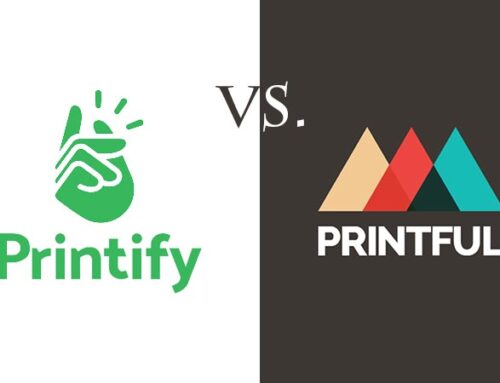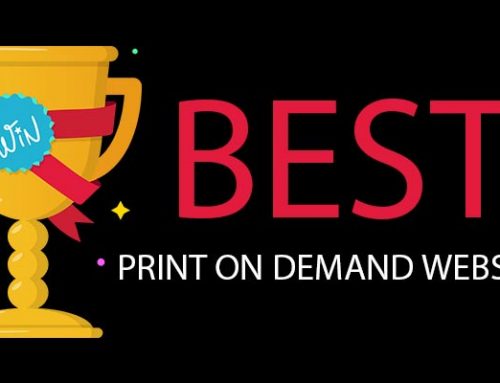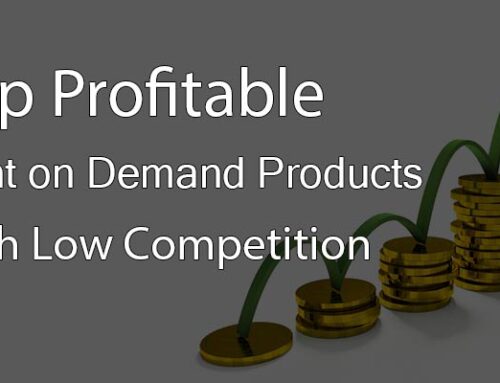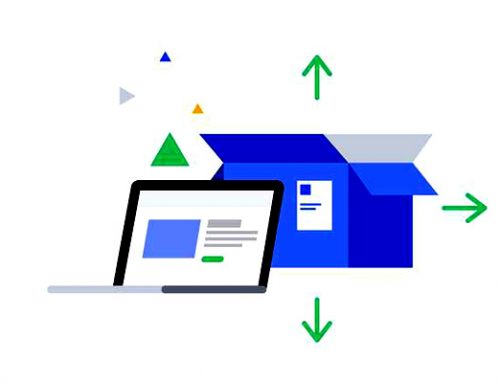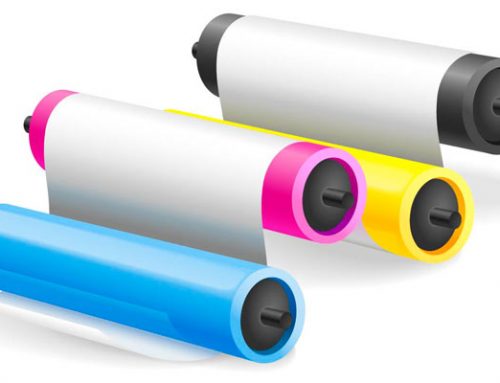Anyone who has been doing any form online business can attest to the idea that on demand custom t-shirt printing is a booming trade. As of today, you can sell not only tees but also thousands of other profitable products. Following are ideas to safely skyrocket sales while you make more profit .
1. Invest your time
Print on Demand is a business on its own. To be successful , just like in any other trade, you will need to set aside a considerable amount of time to learn and understand, what it is, how it works, pros, cons, best practices and more
Let nobody lie to you that learning and understanding it is a one-day, one-month or one-year activity. It all depends on the amount of resources, especially time, you will allocate to the whole process. The more the resources the faster you’ll understand…period!
2. Start Small
Unless you are veteran or you know the secret code to instantly unlock luck, starting big will automatically grant you zero chances of succeeding in the on-demand printing industry.
Starting big in this case means trying to compete with the ‘big fish’ or established companies that have been in the game for years if not decades. The fact is, you will have to invest a lot to even attempt beating them.
All you need is start small by capitalizing on the little areas they are not touching on. In fact, it is highly recommended you start by partnering with these established companies so that you can learn more about loopholes that you can fix with your own POD venture. Starting small will also help you invest your time and money wisely.
3. Be Unique and Avoid Generic Products/Niches
Targeting generic audience with non-specific or unique product will lead to dramatic failures. You need to be clear about what you are selling and who you are selling to.
Print on demand industry has been growing steadily in the last few years and it is still growing at an alarming rate. Some product niches are already flooded.
It is also very important to remember that there are companies or individuals who have been in the industry for a while who, of course, have established their brand/name and reputation…and today, you’re not the only one getting into the business; a lot of people elsewhere are getting into POD
What all that means is that competition is getting stiffer and stiffer. The only solution is to wisely select a product niche, and depending on the competition, narrow it down as much as you can to a specific audience.
For instance, instead of targeting a big or broad niche like t-shirts for pet lovers, narrow pets to something unique like snakes.
Snakes is narrow and unique niche that falls under pets. This means you will avoid targeting general pet lovers but snake pet lovers.
Still, you can narrow your audience basing on age, gender (kid snake lovers, men snake lovers, women snake lovers).
You can as well, still narrow snakes down to a particular kind of snake for instance cobra, python, mambas etc.
With a small niche, it will be easy to test the market while you learn what is working and what is not working.
4. Choose the Right Tools & Platforms
The tools will depend on what level you are at in your print on demand journey. These tools will help you learn and manage your venture in a decent manner.
When are just getting started you will need learning tools. In fact, at any level you will still need to learn. There are both free and paid-for learning tools. For free resources use tools like YouTube and Google Search Engine to look for articles and Podcasts that are dedicated to creating informative POD content.
For paid learning resources, use tools like Thinkific, Udemy or Skillshare.
There are also dedicated forums and social media groups that share tricks, ideas, FAQs (Frequently Asked Questions etc. on POD.
Keyword/Niche research tools-These tools will help you find niche and design ideas on what is popular, what is selling, the competition, the trend etc. You can use tools such as Google trends, Social media platforms, free keyword research web apps like Ubbersuggest, Google Keyword Planner, Keyword Finder among others.
If you’ve taken some lessons, gathered some niche ideas, you will need designing tools. There both free (Gimp, Inkscape or Krita) and commercial (Adobe Photoshop/Illustrator and CorelDraw) tools.
The other set of tools after having done your designs will depend on how you want to sell POD products. If you’ve chosen to use POD marketplaces, make sure you go for platforms with helpful features like analytics to see how products are performing.
If you’ve chosen to start selling on your own store choose an ecommerce platform that will meet your requirements. For quality products and services, you’ll want to partner with the right fulfillment/dropshipping platform.
Once your store is up and running you may need to consider tools to market your custom merchandise. Depending on the type of audience you’re targeting, you might want to use social media tools like Facebook, Pinterest, Instagram etc.
The above-mentioned tools are just some of the essential tools you may want to choose wisely. There are more others that have not been mentioned.
5. Set Clear Policies & Terms
This is mostly important for individuals who own POD stores. If you’re using a marketplace, the policies and terms are already set.
It is crucial to be open and clear because a customer’s decision to buy from your store will depend on what you’ve declared to offer in return for their money. No customer wants spend money on what they’re not sure of.
In terms and policies be sure to include;
- The entire process of buying your products and how long it will take.
- Be very specific and clear on shipping and how long it will take
- Returns Policies-what your clients should do if they’re not satisfied with your product(s)
- Have clear disclaimers
With all this information, it will be easier for customers to quickly evaluate if they can confidently make orders from you store.
6. Promote your POD Products
As discussed above the POD industry is rapidly growing and so is the competition. It is quite hard to make organic sales which in most cases come from free search engines traffic.
Even if it is still possible to make organic sales at some point, it will probably take ages.
Start promoting your products to your family members, friends, workmates etc. Some tools that can help have already been mentioned in the choosing-right-tools section above.
One very important thing to remember while using both the paid and free tools is to ensure that you can read and understand the metrics or data. Without this knowledge, you’re bound to waste time and money.
Another important factor to consider before starting to use paid Ads as form of promotion is the number of products in your online store or shop. Be sure the stock you have is enough. It makes no sense to promote an empty store.
Once again, take your time to find and invest in the right tool. Some tools may be costly and useless at the end of the day.
7. Monitor Performance, experiment and make improvements
This involves checking closely the available POD product data, after a given time, to basically find out what selling, what not selling, who is buying from where and when, what has potential to sell etc.
It is this same information you will need to experiment new products to new audiences. The experiments will provide insights on where you can make adjustments with an aim of improving. At the end of the day, it is obvious that everyone is striving to grow. If you’re not thinking of growth, you’re in the wrong place!
8. Persistence is Key
One of biggest mistake POD starters make is to give up too soon. My friend, Rome was not built in a day! Do not expect to make a fortune overnight.
If you have gathered substantial know-how on the POD industry, you already know that one of its main downsides is that it is a numbers game. The more designs you have, the higher the chances of making sales or at least discovering what has potential to make sales.
As said earlier, monitor performance, experiment, improve and repeat! If you’re thinking of starting and giving up soon, try something else because this trade is not for the faint-hearted.
9. Expand your POD Product Catalogue
T-shirts are by far the most common print on demand products. While it is true that demand for these items is ever growing it is also important to acknowledge that competition is not going to be left behind.
Luckily more less-competitive and profitable POD products are being rolled out day after day. Why not try out these products?
10. Delegate some work
Once you’ve identified winning ideas that are shooting up your POD sales, it is necessary that you bring in more workforce.
No one ever succeeded doing everything by her/himself. Everyone has strengths and weaknesses. If you’re an excellent designer/artist, hire or partner with someone who is excellent at marketing or vice versa.
In the words of Oliver Wendell Holmes, “Many ideas grow better when transplanted into another mind than the one where they sprang up.”
Do I need to explain what he meant? Well, it all about team work!
11. Consider what your Customers are Saying and Improve their Experience
Without the customers, you will of course make no sales. Do remember to always collect their views or reviews, both positive and critical, and strategize on how to make improvements where necessary.
You can also improve your customer’s experience in many ways;
- Personalize each customer’s experience
- Offer a 24/7 Live Chat
- Consider reaching your customers via multiple marketing channels; web, email, social and mobile
- Proactive Customer Service
- Optimize & automate online order fulfillment
- Track the loopholes in your order management process
- Establish a clear and an easy-to-understand return policy
- Create a Frequently -asked-questions Section on your store or shop
- Measure, analyze customer satisfaction and make positive adjustments
There you go, eleven tips to grow your POD venture. Probably there more tips out there. Do not forget to add yours in the comment section below.
